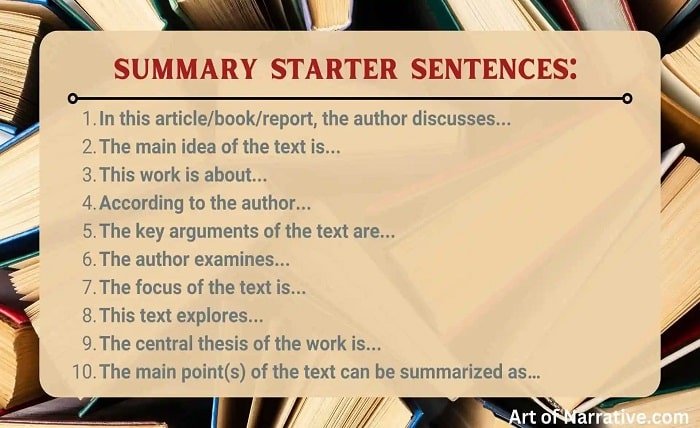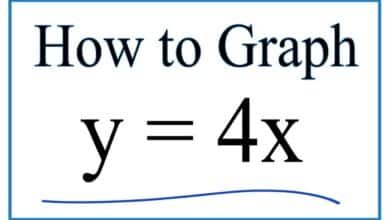Summary Starters: A Comprehensive Guide to Effective Summarization

Introduction
In the realm of writing, summary starters are essential tools that help in effectively condensing information. Whether you’re drafting an essay, report, or article, mastering summary starters can make your summaries more engaging and concise. This guide explores the importance of summary starters, their various types, and how to use them to enhance your writing skills.
What Are Summary Starters?
Summary starters are introductory phrases or sentences used to begin a summary. They set the tone for the summary and provide a clear starting point for condensing the main ideas of a text. Effective summary starters help the reader quickly understand the key points without wading through unnecessary details.
Importance of Using Summary Starters
Using summary starters is crucial for clarity and coherence in writing. They help organize thoughts, making it easier for readers to follow the main ideas. Additionally, summary starters aid in structuring summaries, ensuring that all essential points are covered systematically.
Types of Summary Starters
There are various types of summary starters, each serving a different purpose. Some common types include introductory phrases, transitional phrases, and concluding phrases. Understanding the different types of summary starters allows you to choose the most appropriate one for your context.
Introductory Summary Starters
Introductory summary starters are used to begin a summary by introducing the main topic. Examples include phrases like “The article discusses,” “The book explores,” and “The report examines.” These starters set the stage for presenting the key points of the content.
Transitional Summary Starters
Transitional summary starters help in connecting different sections of the summary. They ensure a smooth flow of ideas and maintain coherence. Examples include “Furthermore,” “In addition,” and “Moreover.” These phrases help in adding new information while keeping the summary organized.
Concluding Summary Starters
Concluding summary starters are used to wrap up the summary, providing a final overview of the main points. Examples include “In conclusion,” “To sum up,” and “Overall.” These phrases signal the end of the summary and reinforce the main ideas.
Tips for Crafting Effective Summary Starters
Crafting effective summary starters requires a clear understanding of the content and the ability to identify key points. Some tips include keeping the starters concise, ensuring relevance to the main ideas, and using varied phrases to maintain reader interest. Practice and feedback can also enhance your ability to create impactful summary starters.
Common Mistakes to Avoid with Summary Starters
Avoiding common mistakes is essential for mastering summary starters. Common errors include being too vague, using repetitive phrases, and including unnecessary details. Ensuring that your summary starters are specific, varied, and focused on the main ideas can prevent these mistakes.
Enhancing Academic Writing with Summary Starters
In academic writing, summary starters play a significant role in summarizing research papers, articles, and other scholarly texts. They help in presenting a clear and concise overview of complex information, making it easier for readers to grasp the main arguments and findings.
Using Summary Starters in Professional Writing
Summary starters are equally important in professional writing, such as business reports, proposals, and executive summaries. They help in distilling key information and presenting it in a clear and concise manner, which is crucial for decision-making processes and effective communication in the workplace.
Practicing Summary Starters with Examples
Practicing with examples is an excellent way to improve your summarization skills. Analyze different texts and create summaries using various summary starters. Compare your summaries with the original texts to ensure that you have captured the main ideas accurately and concisely.
Benefits of Mastering Summary Starters
Mastering summary starters offers several benefits, including improved writing clarity, enhanced readability, and better organization of ideas. It also boosts your ability to convey complex information succinctly, making your writing more effective and engaging.
Conclusion
Summary starters are invaluable tools in both academic and professional writing. They help in organizing and presenting information clearly and concisely, ensuring that the main ideas are effectively communicated. By understanding the different types of summary starters and practicing their use, you can enhance your summarization skills and improve your overall writing proficiency.
FAQs
1. What are summary starters?
Summary starters are introductory phrases or sentences used to begin a summary, helping to set the tone and organize the main ideas.
2. Why are summary starters important?
Summary starters are important for clarity and coherence, making it easier for readers to understand the key points of a text quickly.
3. What are some examples of introductory summary starters?
Examples of introductory summary starters include “The article discusses,” “The book explores,” and “The report examines.”
4. How can I avoid common mistakes with summary starters?
Avoid being too vague, using repetitive phrases, and including unnecessary details. Ensure that your summary starters are specific, varied, and focused on the main ideas.
5. How can summary starters enhance academic writing?
In academic writing, summary starters help in presenting a clear and concise overview of complex information, making it easier for readers to grasp the main arguments and findings.





